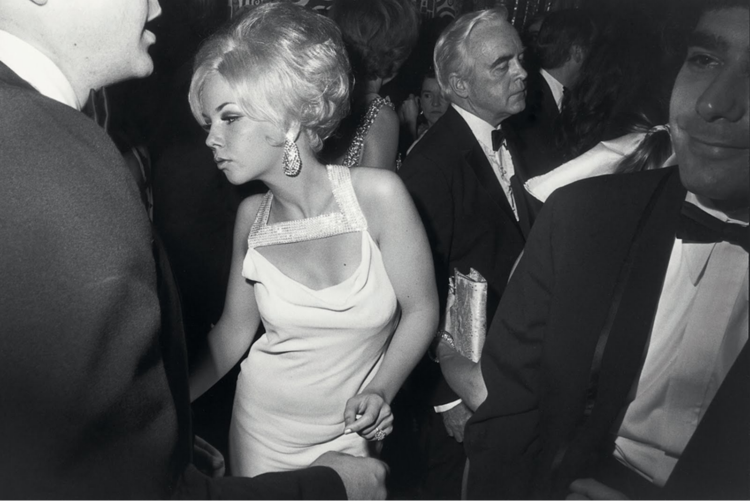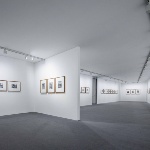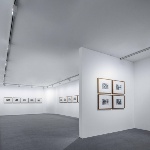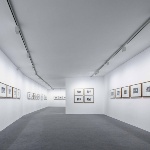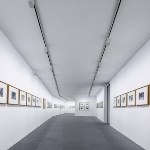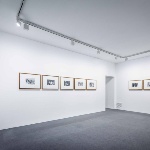
Main site sections
Garry Winogrand
Women (are beautiful)
15.07
-
09.10.2016
curated by Lola Garrido
At one year from the success of the Vivian Maier exhibition, the Museum of the Province of Nuoro is proud to announce the opening of a new important exhibition dedicated to Garry Winogrand, the father of street photography.
In recent years, Winogrand's (1928-1984) work has often been compared to and presented together with that of Vivian Maier. He too, as did the now famous "nanny photographer", worked in the streets of New York, starting from the early 1960s, and continued, almost obsessively, an extensive work of reportage.
Winogrand was one of the most important chroniclers of American society, as well as being one of the great international photographers of the 1960s and ‘70s. His observation of the habits of his fellow citizens, seemingly cursory, almost casual and often ironic, was influenced by the social photography of Robert Frank and Walker Evans.
Winogrand saw in the anonymous inhabitants of American cities the ideal subjects through whom to express his vision of the world, narrating unconventional stories, with no script or theatrical effects, always captured in public places: parks, zoos, shopping centers, museums, airports or during political rallies and sports events.
His technique is based on the use of wide-angle lenses. The many contact prints that have come down to us show that Winogrand went in search of a space outside his subjects, often exaggerating the slant of the camera. As has been written many times, it would be wrong to disregard the backgrounds of his shots as mere secondary elements, as irrelevant visual "noise". In Winogrand's original vision, the external details within the frame of the picture contributed to strengthening the impact and meaning of the subjects portrayed.
The MAN exhibition, curated by Lola Garrido and organized together with diChroma Photography, presents for the first time in Italy the complete collection of the photographs which in 1975 went into the famous volume “Women are Beautiful”, now a cult object. These are snapshots,proposed here in a series of original prints that celebrate the figure of women with a faithful gaze in which we see a mixture of admiration and irony, veneration and sarcasm.
In many aspects this is a controversial work, comparable to that of the poets of the Beat Generation, and was on the receiving end of much criticism. Indeed, if in the eyes of some interpreters the photographs appearas a joyous reflection on women's emancipation and sensuality, others - owing to the presence of shapely figures in succinct garb or miniskirts, or the lingering of the camera on breasts and posteriors - see them as the contorted expression of male chauvinism and misogyny.
What is certain is that it is not a superficial reflection on the new concepts of beauty, but rather a description of the social consequences of American counterculture, as well as a declaration in support of women's rights and freedom at a time when puritanism appeared to be questioning the conquests of the postwar period.The renowned photographer Joel Meyerowitz, Winogrand's friend, spoke of his work as a clash and an embrace, Winogrand as a contradiction and his images as contradictory.
***
Garry Winogrand (1928-1984) was born into a working class family in the Bronx. He began taking pictures while serving in the army. He studied painting at the City College of New York and photography at Columbia University. In 1949, he followed a course in photojournalism at the New School for Social Research of New York and from 1952 to 1969 he worked as a freelance photo reporter. His first important exhibition was at the MOMA in 1963. In 1966 he presented his photos at the exhibition Toward a social landscape at the George Eastman House in Rochester, together with Lee Friedlander, his friend and travelling companion. With Friedlander andDiane Arbus he participated in the exhibition New Documents (MOMA, 1967). He won the Guggenheim Fellowship Award three times (1964, 1969, 1979) and once the National Endowment of the Arts Award (1979). Garry Winogrand's documentary photographs appeared in magazines such as Sports Illustrated, Fortune and Life. On his death from cancer in 1984, he left an enormous archive of images, many of which never developed. A number of these were collected, exhibited and published by the MOMA in the volume Winogrand. Figments from the Real World (1988). Winogrand's works are present in the collections of the world's most important museums, such as the MOMA in New York, the Tate Modern in London and the Centre Pompidou in Paris.
Lola Garrido is an art historian specializing in photography. She curated the collection of the Banesto Foundation, which today enhances the patrimony of the Museo Reina Sofia in Madrid. As an art critic she has worked with the most important Spanish journals. Her personal collection of photographs has appeared in many exhibitions.
The MAN Museum is an institution of the Province of Nuoro supported by the Autonomous Region of Sardinia and the Banco di Sardegna Foundation.

